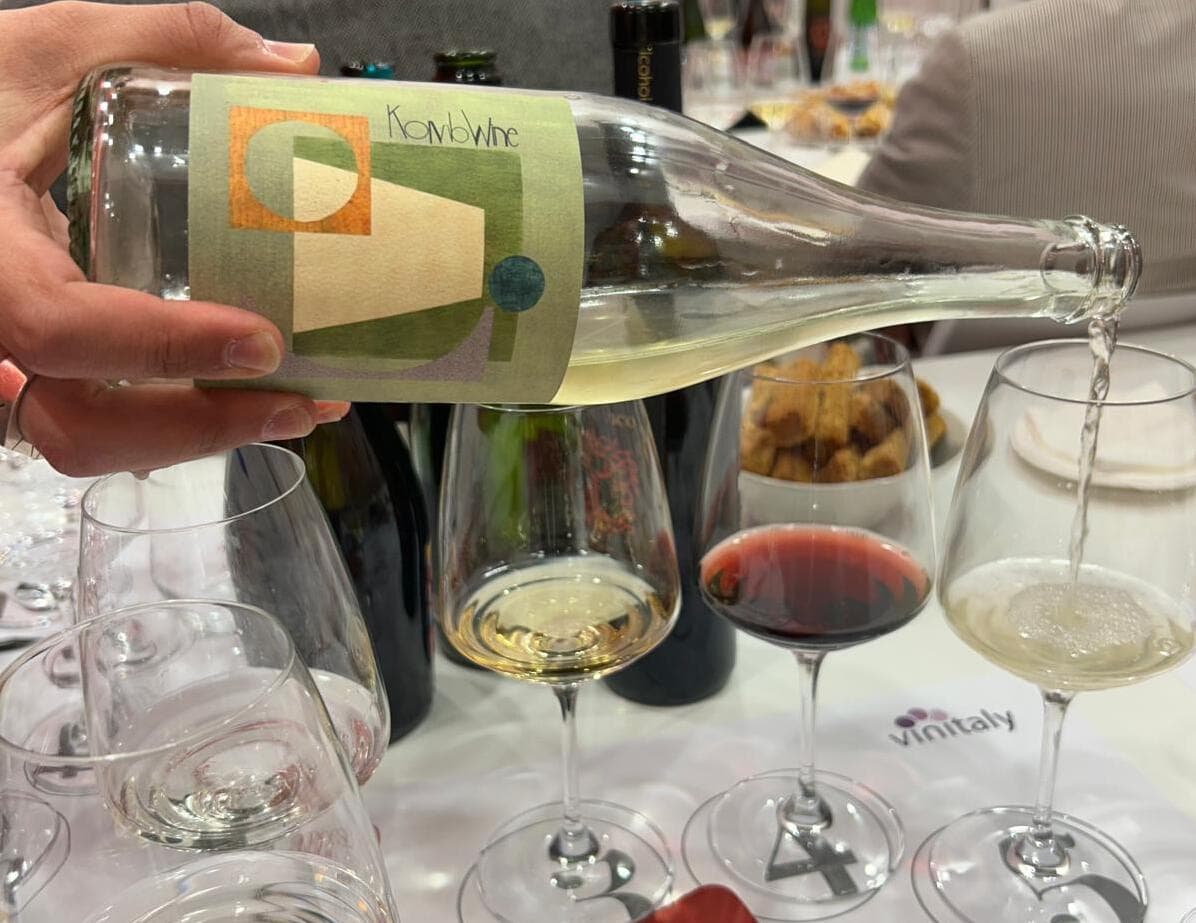Discussing gelato in the fall? Sure, gelato – the good quality one – knows no climate or season. The season may influence the way we consume gelato: we no longer turn to it for cooling off, rather for the pure pleasure of tasting a fine product. The necessary requisite is however that the gelato be very good quality.
The criteria span from venue evaluation, cleanliness, staff competence, information accuracy delivered, variety of flavors, ways of testing out a gelateria on first time visit, to what flavors to choose to get a clear operational picture. In addition to these, don’t be afraid to ask questions, ever. Ask to learn: origin of ingredients, gelato production time, number of flavors and number of personnel. Knowing how each place conducts work is essential. Here are the criteria adopted by the Guide’s inspectors, we’re sharing them with you to provide gelato lovers with the tools necessary to evaluate a gelateria.
The first commandment? Don’t fall in the “artisanal” homemade gelato trap. The label is not sufficient to ward you from reckless gelato makers who label a product as homemade but that is everything but. We’re instead seeking the gelato made by true artisans, choosing quality ingredients and producing without shortcuts and chemical additives. How to spot the genuine producers? Read on.
Venue evaluation
List of ingredients. Should always be displayed and easily available to customers. This is a sign of serious adherence to the law, and transparency in regards to customers. Be wary if the ingredient list is missing, same goes if the list contains too many obscure items. In that event, ask for explanations. Gelato is a product that’s made with very few ingredients, and mostly with very little to no “E”s followed by numbers.
Venue. Modern, kitsch, elegant or classic, with seating or hole-in-the-wall, what’s more important over decor is cleanliness and tidiness in the sales point and more so in the gelato-making facility. Same goes for the staff, which must be clean, tidy and presentable, wearing aprons and hairnets or hats.
Gelato display. Both carapina or sorbet tubs are valid containers. In the tubs, gelato should never overflow above the chill level. Otherwise there would be a bacteria alteration in the mass and definitely this would more easily melt. Distrust those heaped tubs of compact gelato that overflow above the brim: this is an indicator of a product rich in fats or enhancers (ingredients that have nothing in common with quality gelato).
Staff. It does not make a difference if the gelato maker is present, what’s important is that there always be someone present who can answer your questions and erase your doubts with clear, knowledgeable answers. What pistachios do you employ? Where do the strawberries come from? Do you use thickeners? What kind of marsala do you use in your zabaione flavor? What’s a good pairing with your lemon custard flavor? Whatever your query, it’s important to have a staff member on site to explain the product correctly. Essential in case you need explanations regarding ingredients in terms of allergies or intolerances. Possibly, also kind and courteous
Visual evaluation
Looks. Be wary of bright, flashy colors, and excessively shiny or excessively matte masses (the former is an indicator of high fat content, the latter denotes an old product). The texture of gelato needs to be evaluated at the moment you taste it, not the moment of scooping. Gelato that’s served appearing too hard and compact could turn out to be silky and melty when tasted.
Variety. Too many or too few flavors? Everyone has an opinion on this topic. But the truth is it all depends on a number of factors, above all, retail turnaround. If a gelateria works well and goes through all flavors evenly, there is no max limit to number of flavors sold. Selling off dozens of different flavor tubs of gelato and avoiding leftovers requires more effort. Entry level amount of flavors for the average gelateria is 5-6 flavors.
When is gelato considered old? Opinions differ on this topic: according to our most trusted artisans, each mentions a different shelf life. Some say that after three days after production the gelato reaches a peak in quality; others maintain gelato must be discarded after two days. The majority agree, however, that after four days gelato needs to be thrown out, or – in minimal amounts – can be added to a new batch.
Choosing
Cone or cup? Purists advise single flavors in a cup for better evaluation of the individual flavors without risk of flavor overlap. This actually applies when selecting intense flavors like dark chocolate, lemon, berries – which may tend to cover other more delicate flavors. Gelato also tends to melt, so – unless gobbling it all up quickly, and risking brain freeze – mixing flavors will result in a mishmash soup.
What flavors? To test a product for the first time, we suggest going with something simple, and avoid elaborate toppings, which could be distracting.
Cream flavors. As far as cream flavors (non fruits, that is) go with classic egg custard, vanilla or fiordilatte (milk). This may be sound too delicate but actually this is the best test bed. If it tastes good, possessing a nice clean cream flavor, for sure the ingredients used to make it are top notch and properly employed.
Fresh fruit flavors. Test the fruit flavors, possibly in season, which means the gelateria cannot cheat: if the quality of the fruit is below average, it will be virtually impossible for the gelato to be above par. Fruit used must be fresh and at peak ripening and whole. Look around, especially in small shops a delivery vehicle or crates should not be too far.
Nut flavors. There are different schools of thought regarding nut flavors: with or without ground/whole nuts added in the mix, or without any chunks at all. The advice is don’t let the presence of chunks distract you: a whole pistachio nut or a whole hazelnut in the gelato add flavor and texture, but you need to evaluate the flavor of gelato mass first, and only after factor in the whole mouthful.
The cone. If you choose to eat gelato from a cone, it must be crunchy, fresh and with a pleasant flavor. What’s it made with. Ideally you would need to know the ingredients used for the cone too. It’s not indispensable, yet indicates how serious the gelateria is. If it’s important to learn all about products and gelato makers, it’s equally important to know all about who makes the cones and wafers.
Taste evaluation
Aroma. Before tasting the gelato, give it a good sniff. If the aroma is good, the gelato should be equally tasty. Despite the low temperature, fragrant, pleasant, fresh scents should be picked up.
Temperature. The first spoonful prepares the palate to the cold temperature for the following spoonfuls to come. If the gelato is too warm, this is an indicator that there are too many fats in it; if too cold it means there are low amounts of sugar.
Texture. The best way to appreciate the texture of proper gelato, press the mass against the roof of your mouth with your tongue. This allows you to detect any ice crystals (these form during production if there are temperature hiccups or if the serving spoon has not been properly cleaned). Excessive creaminess is connected to quantity and quality of fats and air. If there is too much air in the gelato mass, it will melt quicker. Slippery, heavy cream mouthfeel is usually a result of presence of refined hydrogenated fats.
Evaluation. Leaving aside personal flavor favorites and habit or preference of sweet vs. savory, do consider the following factors:volume, temperature, texture (always taking into account specific flavor characteristics, like alcoholic flavors will surely be softer, sorbet will be slightly less creamy, and so forth) conto della specificità di ciascun gusto: per esempio un gelato alcolico sarà sicuramente più morbido di altri, un sorbetto appena meno cremoso), correspondence between ingredient and gelato flavor, balance of fats and sugars, flavor persistence, fatty or dry mouthfeel.
Taste. Try this experiment: a blind tasting: are you able to recognize the flavor? It’s not easy, because cold temperatures distract and reduce taste bud sensibility. Aromas too are conditioned by temperature, but try anyway, and then another, judging persistence and aftertaste. Are you still tasting the flavor? Is it pleasant? Is the mouthfeel refreshing or do you need a sip of water to cleanse your palate? A typical shortcoming is an eggy aftertaste after eating “crema” custard gelato. Another element to consider after the first spoonful is, is the flavor still vivacious, or is it immediately weakened?
Last rule
One visit is not enough. Allow yourself a second visit. It will hardly ever overthrow your first impression, but you will definitely have more tools to better evaluate tasting more flavors and discover how each place has signature or better fruit or cream/nut flavors. You don't have to always and only focus on chocolate and crema. But you can indeed create a personalized map of favorites for each place.
This is what our inspectors have been using for the past years while evaluating the best gelato in Italy.
by Antonella De Santis
translated by Eleonora Baldwin


 Versace opens a super hotel with an Italian restaurant. Here's what Donatella Hotel & Restaurant in Miami will be like
Versace opens a super hotel with an Italian restaurant. Here's what Donatella Hotel & Restaurant in Miami will be like At The Crown Tirana, service and quality at the highest levels
At The Crown Tirana, service and quality at the highest levels We tasted Komb(w)ine, the new product that combines grape must and kombucha. Here’s our verdict
We tasted Komb(w)ine, the new product that combines grape must and kombucha. Here’s our verdict What changes for the export of Italian wines to China under the new regulations?
What changes for the export of Italian wines to China under the new regulations? “Forget dealcoholised wines. The future is Komb(w)ine.” Moser and Ravizza present a new grape must-based product
“Forget dealcoholised wines. The future is Komb(w)ine.” Moser and Ravizza present a new grape must-based product






